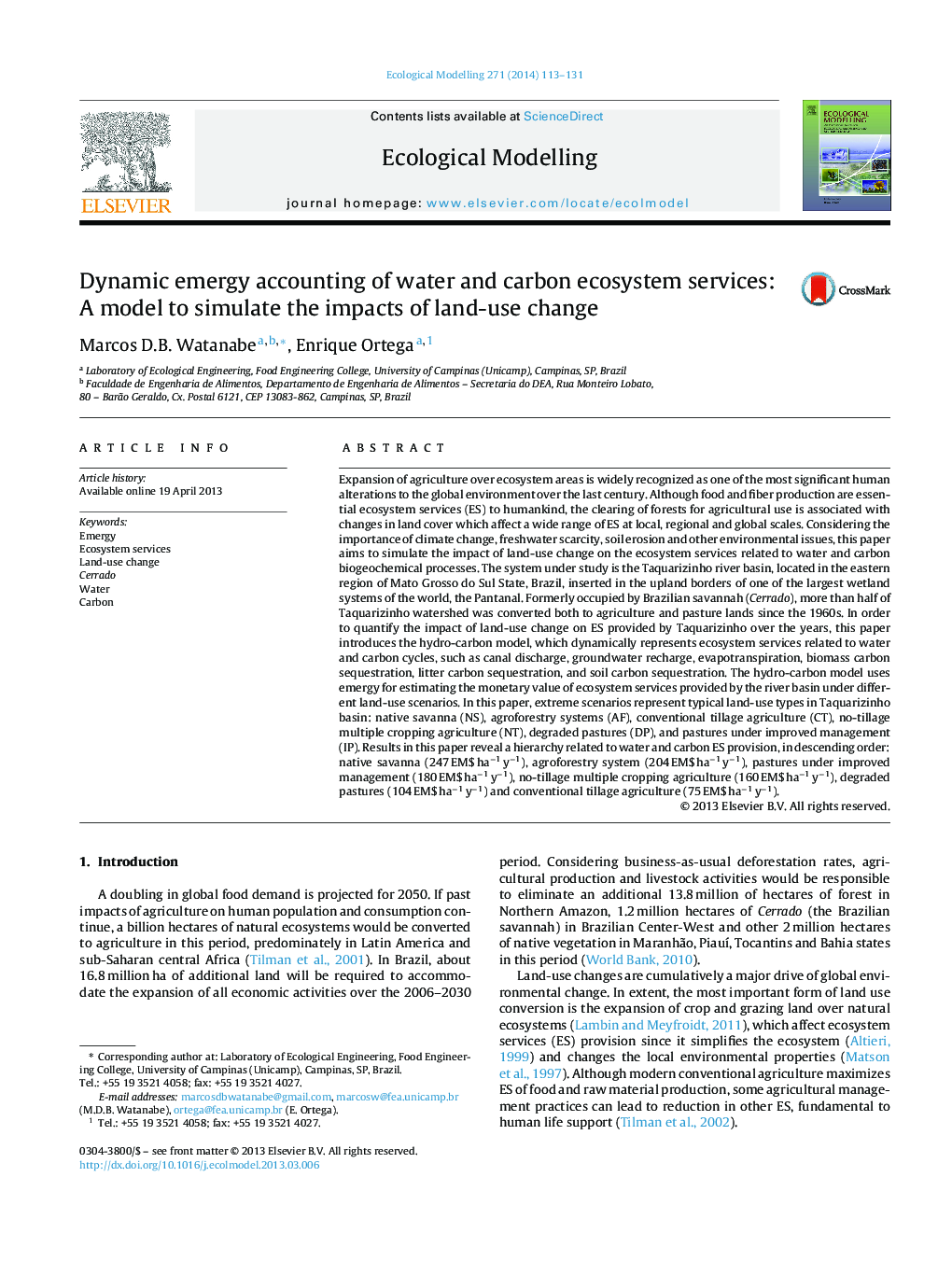| کد مقاله | کد نشریه | سال انتشار | مقاله انگلیسی | نسخه تمام متن |
|---|---|---|---|---|
| 4376029 | 1617475 | 2014 | 19 صفحه PDF | دانلود رایگان |
• This paper uses emergy to attribute value to ecosystem services.
• The hydro-carbon model shows the impact of land-use change on the ecosystem services.
• Native savanna is related to the highest simulated value (247 EM$ ha−1 y−1).
• Conventional soil tillage is related to the lowest simulated value (75 EM$ ha−1 y−1).
Expansion of agriculture over ecosystem areas is widely recognized as one of the most significant human alterations to the global environment over the last century. Although food and fiber production are essential ecosystem services (ES) to humankind, the clearing of forests for agricultural use is associated with changes in land cover which affect a wide range of ES at local, regional and global scales. Considering the importance of climate change, freshwater scarcity, soil erosion and other environmental issues, this paper aims to simulate the impact of land-use change on the ecosystem services related to water and carbon biogeochemical processes. The system under study is the Taquarizinho river basin, located in the eastern region of Mato Grosso do Sul State, Brazil, inserted in the upland borders of one of the largest wetland systems of the world, the Pantanal. Formerly occupied by Brazilian savannah (Cerrado), more than half of Taquarizinho watershed was converted both to agriculture and pasture lands since the 1960s. In order to quantify the impact of land-use change on ES provided by Taquarizinho over the years, this paper introduces the hydro-carbon model, which dynamically represents ecosystem services related to water and carbon cycles, such as canal discharge, groundwater recharge, evapotranspiration, biomass carbon sequestration, litter carbon sequestration, and soil carbon sequestration. The hydro-carbon model uses emergy for estimating the monetary value of ecosystem services provided by the river basin under different land-use scenarios. In this paper, extreme scenarios represent typical land-use types in Taquarizinho basin: native savanna (NS), agroforestry systems (AF), conventional tillage agriculture (CT), no-tillage multiple cropping agriculture (NT), degraded pastures (DP), and pastures under improved management (IP). Results in this paper reveal a hierarchy related to water and carbon ES provision, in descending order: native savanna (247 EM$ ha−1 y−1), agroforestry system (204 EM$ ha−1 y−1), pastures under improved management (180 EM$ ha−1 y−1), no-tillage multiple cropping agriculture (160 EM$ ha−1 y−1), degraded pastures (104 EM$ ha−1 y−1) and conventional tillage agriculture (75 EM$ ha−1 y−1).
Figure optionsDownload as PowerPoint slide
Journal: Ecological Modelling - Volume 271, 10 January 2014, Pages 113–131
